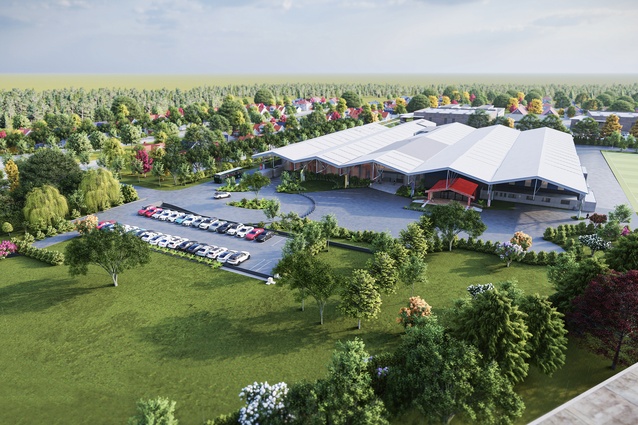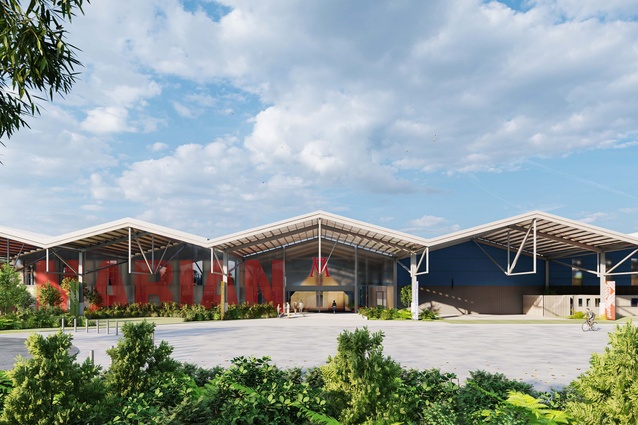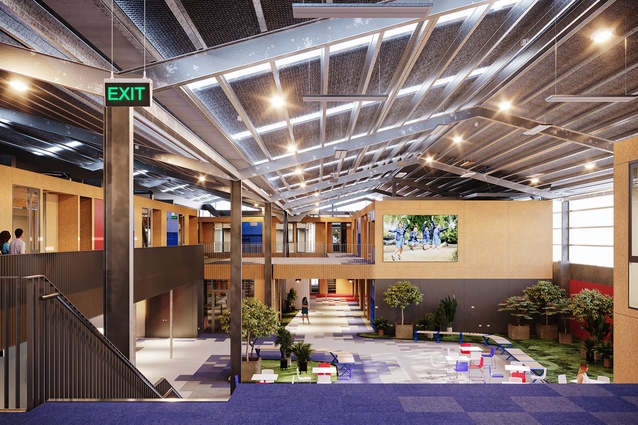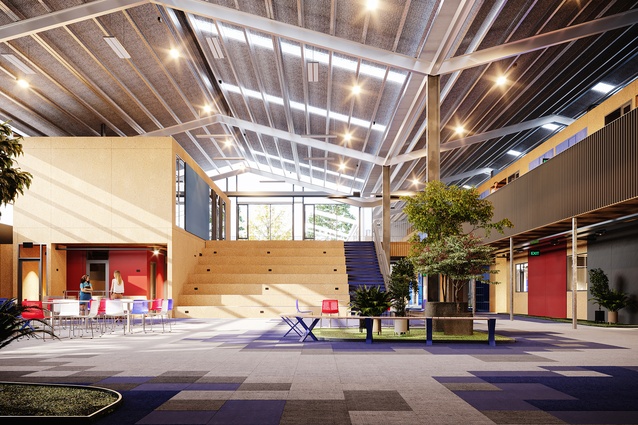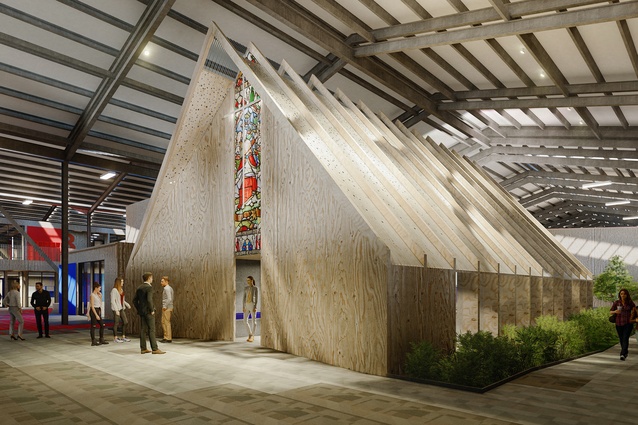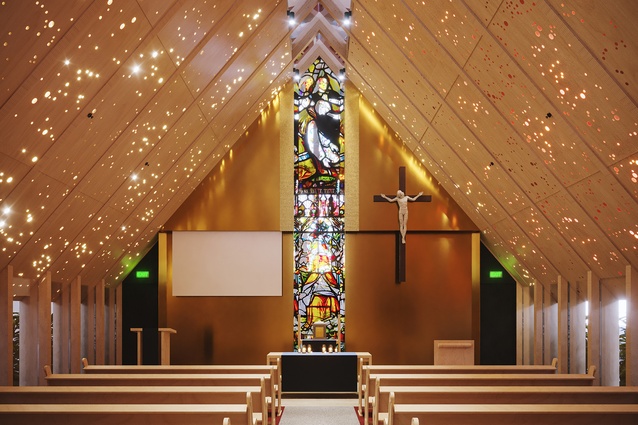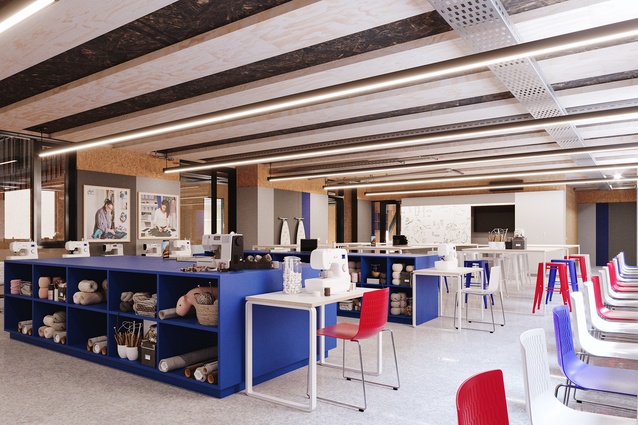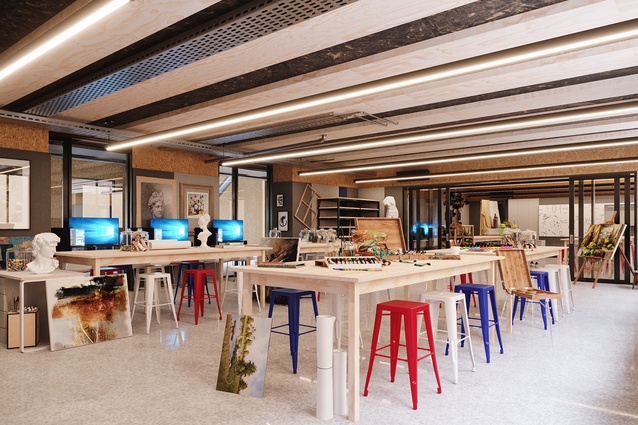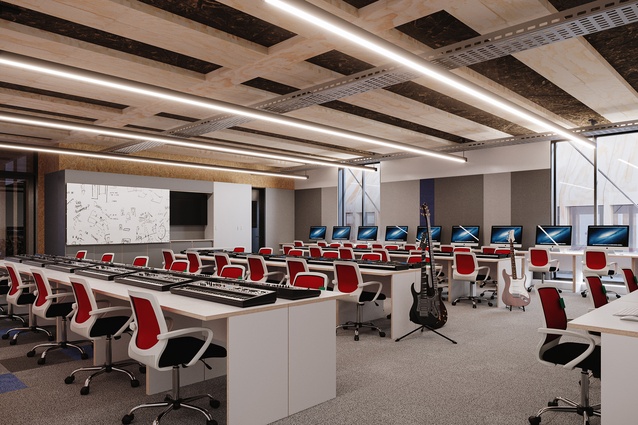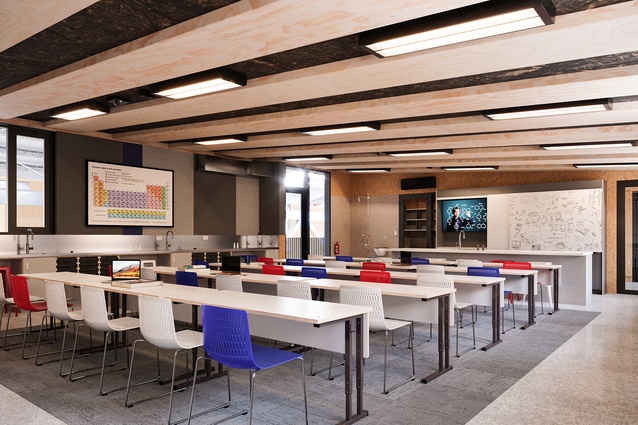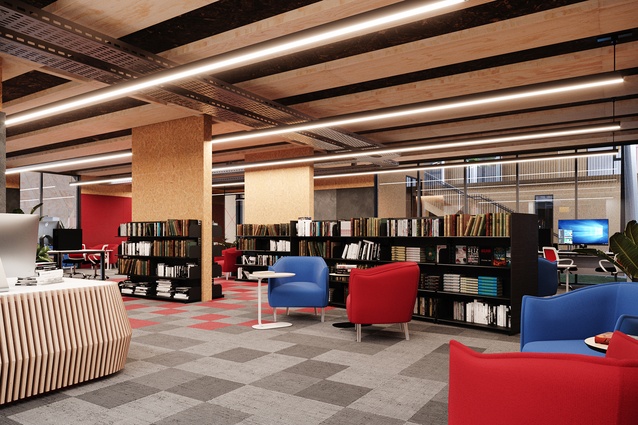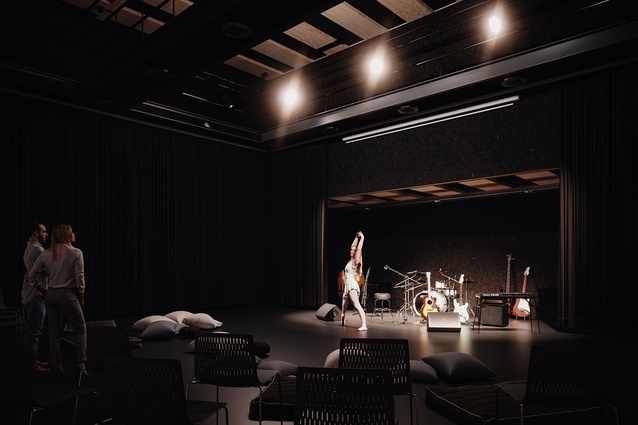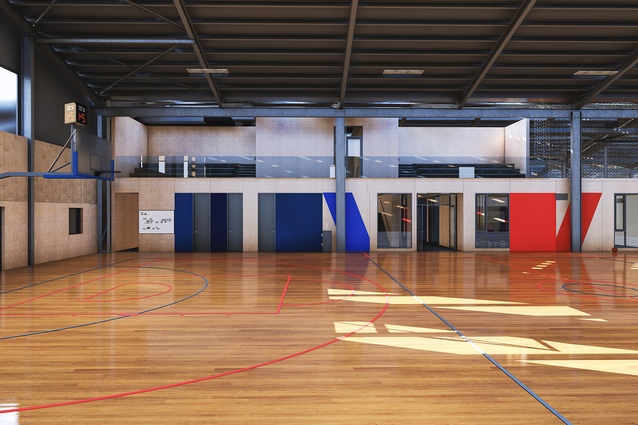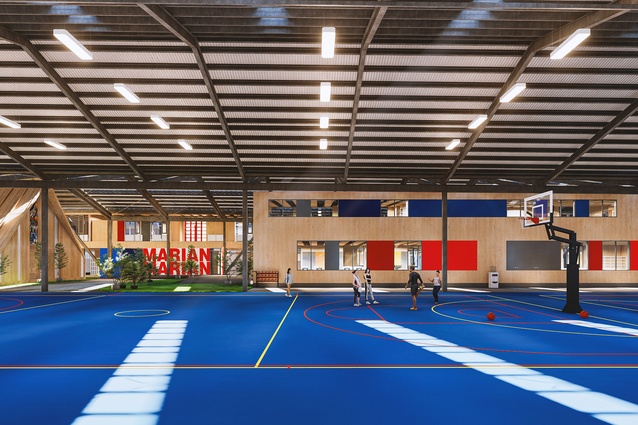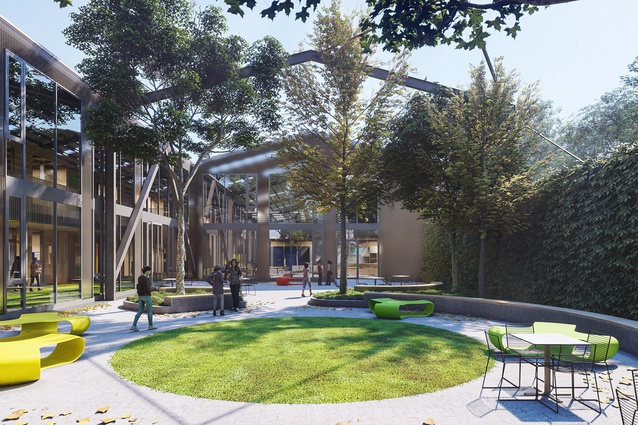Large-scale reuse for new school campus
Having been badly hit by the 2011 Canterbury earthquakes, Christchurch Catholic girls’ school Marian College had to vacate its North Parade premises and move to a temporary location in Barbadoes Street. After an almost-decade-long search for a permanent new home, the school came up with a unique solution.
A former Foodstuffs distribution centre on Lydia Street — the largest of its kind in the South Island when it was built — was acquired by the Catholic Diocese and the concept of placing the new school within the 17,000m2 structure was explored.
A feasibility study conducted by consultants WSP concluded the idea was possible and the school engaged Christchurch-based practice Sheppard & Rout as project architects.
Associate director Jonathan Kennedy says the “brave concept” presented a number of challenges, including bringing enough light and a sense of the outdoors into what was essentially an internal environment and how to place two-storey classroom blocks within the existing structure and foundations with minimal disturbance.
“The roof was removed off one bay to form a walled garden, bringing light, air and greenery into the heart of the school,” explains Kennedy, “and new translucent polycarbonate roofing strips and wall cladding bring a soft, diffused natural light inside the space.”
The immense canopy shelters the school beneath from the elements, providing a protected, focused environment, and the new structures within are constructed from prefabricated timber components; this reduces the weight on new and existing foundations. Timber glulam, LVL, Potius flooring and roofing and Strandboard lining also sequester significantly more carbon than would a more standard build of concrete and steel.
“Reusing the existing warehouse makes this a highly sustainable project. It becomes a learning tool in itself for all the pupils passing through in these climate-change-conscious times,” Kennedy points out.
The school’s chapel is placed on the entrance axis, with other school facilities, including a generous, covered courtyard with broad stairs for school gatherings, wrapping around it. Covered netball courts are also incorporated: “a luxury enabled by the warehouse roof,” says Kennedy.
The campus is due to open in time for the start of the school year in 2024; Kennedy says that this unique, highly sustainable learning environment highlights what is possible with creative thinking, an open-minded client and a genuine commitment to mitigating climate change.
For more information on this and other Sheppard & Rout projects, head to their website.

